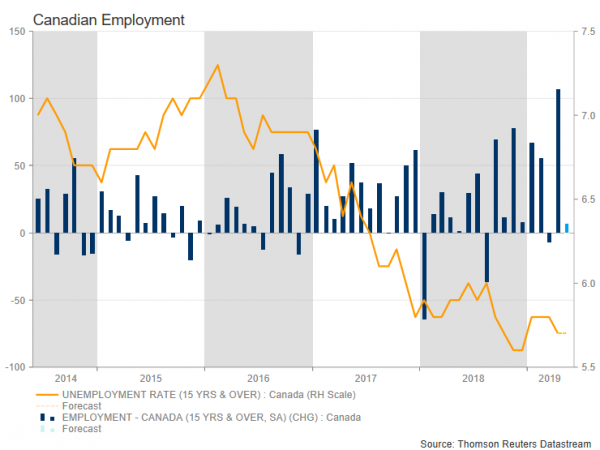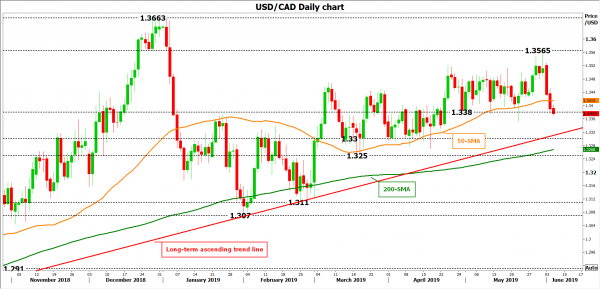The latest monetary policy meeting in the preceding week by the Bank of Canada highlighted the importance of the labor market, making the Canadian employment report due on Friday at 1230 GMT the next major event for the loonie.
After hitting a record of 106.5k increase in April, the Canadian economy is expected to have created 7.5k new job positions in May. The participation rate is predicted to tick lower to 68.5% from 65.9% previously, while the unemployment rate is not anticipated to excite as the measure is seen steady at 5.7% so there could be some gains ahead for the loonie if wage growth and employment numbers show some improvement in the labour market.
The Bank of Canada (BoC) left its interest rates unchanged at 1.75% on May 29, as widely expected, which is the highest rate since December 2008. The Bank Rate is correspondingly 2% and the deposit rate is 1.5%. The Bank, which has increased interest rates five times since July 2017, mentioned that it expects growth to advance in the second half of the year, as housing market indicators point to a more stable national market, albeit with continued weakness in some regions.
Policymakers mentioned that the economic slowdown in late 2018 and early 2019 was temporary. The BoC attributed the vulnerability of the economy to global developments, stating that global trade tensions were high risks over the country’s economic outlook. Good news came from the monthly GDP estimates, which ticked higher with a gain of 0.6% in March, after a drop of 0.1% before.
Trade risks continue to have an impact on the Canadian dollar. Tensions between the US and China remain high, with no talks scheduled between the two sides. Last week, US President Donald Trump threatened to slap tariffs on all Mexican products for Mexico’s failure to deal with the large influx of illegal immigrants into the US. Although, Trump said that tariffs would be set at just 5%, stock markets edged aggressively lower. The new tariffs between the US and Mexico could also hurt the Canadian economy and the loonie.
Inflation has grown in line with the Bank’s April projection. The Bank expects CPI inflation to remain around the 2% target in the coming months. Core inflation measures all remain close to 2%.
Turning to market reaction, the Canadian dollar has been gaining considerable ground against the dollar over the last few days. However, a weaker-than-predicted jobs report on Friday, could reduce chances for a rate hike and drive USDCAD to test the four-month high of 1.3550 and then the 19-month high of 1.3663, identified by the peaks on December 31.
Alternatively, if the employment report shows growth or/and the unemployment rate shifts lower, the pair could return to the 1.3300 support area, below the long-term rising trend line while steeper declines could also revisit the 1.3250 barrier.















